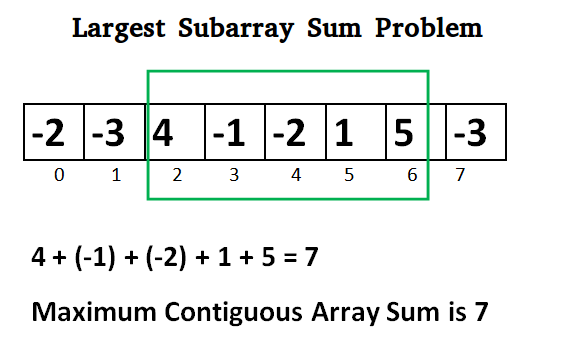Building a Medical Diagnostic Chatbot with First Order Logic
In this tutorial, we’ll build an interactive medical diagnostic chatbot that uses First Order Logic (FOL) for inference. This demonstrates how formal logic c...
The maximum subsequence sum algorithm is a classic problem in computer science. The problem is to find the maximum sum of a contiguous subsequence in an array of integers. The algorithm has a number of different implementations with different time complexities. The following are some of the most common implementations of the algorithm.

This implementation uses three nested loops to iterate over all possible subarrays of the input array and calculate the sum of each subarray. The maximum sum is then updated if a larger sum is found.
public static int maxSubSum1(int[] a) { int maxSum = 0; for (int i = 0; i < a.length; i++) { for (int j = i; j < a.length; j++) { int thisSum = 0; for (int k = i; k <= j; k++) { thisSum += a[k]; } if (thisSum > maxSum) { maxSum = thisSum; } } } return maxSum; }
This implementation is an improvement over the cubic algorithm. It calculates the sum of each subarray according to the previous sum instead of recalculating the sum from scratch which makes the last nested loop unnecessary.
public static int maxSubSum2(int[] a) { int maxSum = 0; for (int i = 0; i < a.length; i++) { int thisSum = 0; for (int j = i; j < a.length; j++) { thisSum += a[j]; if (thisSum > maxSum) { maxSum = thisSum; } } } return maxSum; }
This implementation uses a divide-and-conquer approach to solve the problem. It divides the input array into two halves and recursively calculates the maximum subsequence sum for each half. It then combines the results to find the maximum subsequence sum for the entire array.
public static int maxSubSum3(int[] a) { return maxSumRec(a, 0, a.length - 1); } int maxSumRec(int[] a, int left, int right) { if (left == right) { if (a[left] > 0) { return a[left]; } else { return 0; } } int center = (left + right) / 2; int maxLeftSum = maxSumRec(a, left, center); int maxRightSum = maxSumRec(a, center + 1, right); int maxLeftBorderSum = 0, leftBorderSum = 0; for (int i = center; i >= left; i--) { leftBorderSum += a[i]; if (leftBorderSum > maxLeftBorderSum) { maxLeftBorderSum = leftBorderSum; } } int maxRightBorderSum = 0, rightBorderSum = 0; for (int i = center + 1; i <= right; i++) { rightBorderSum += a[i]; if (rightBorderSum > maxRightBorderSum) { maxRightBorderSum = rightBorderSum; } } return max3(maxLeftSum, maxRightSum, maxLeftBorderSum + maxRightBorderSum); } int max3(int a, int b, int c) { return a > b ? (a > c ? a : c) : (b > c ? b : c); }
This implementation is the most efficient and uses a linear algorithm to solve the problem. It iterates over the input array once and calculates the maximum subsequence sum using a single loop.
public static int maxSubSum4(int[] a) { int maxSum = 0; int thisSum = 0; for (int i = 0; i < a.length; i++) { thisSum += a[i]; if (thisSum > maxSum) { maxSum = thisSum; } else if (thisSum < 0) { thisSum = 0; } } return maxSum; }
In this tutorial, we’ll build an interactive medical diagnostic chatbot that uses First Order Logic (FOL) for inference. This demonstrates how formal logic c...
Informed Search Algorithms Using Python Libraries
In this post, we will discuss the problem of generating all subsets of a given set of elements. A subset is a collection of elements that are selected from a...
Computing the exponentiation of a number is a classic problem in computer science. The problem is to find the value of a number raised to the power of anothe...
The maximum subsequence sum algorithm is a classic problem in computer science. The problem is to find the maximum sum of a contiguous subsequence in an arra...
In this post, I will explain a very indispensable tool for developers. Docker is a tool that allows developers to build, deploy, and run applications using c...
In this post, we will discuss the problem of generating all permutations of a given set of elements. A permutation is an arrangement of elements in a specifi...
The convex hull problem is a problem in computational geometry. It is about finding the smallest convex polygon that contains a given set of points. The conv...
Project 1: Project management system The aim of this project is to implement a program (java or python) that manages a list of tasks in a project. The pr...
Use the form link to choose a project :